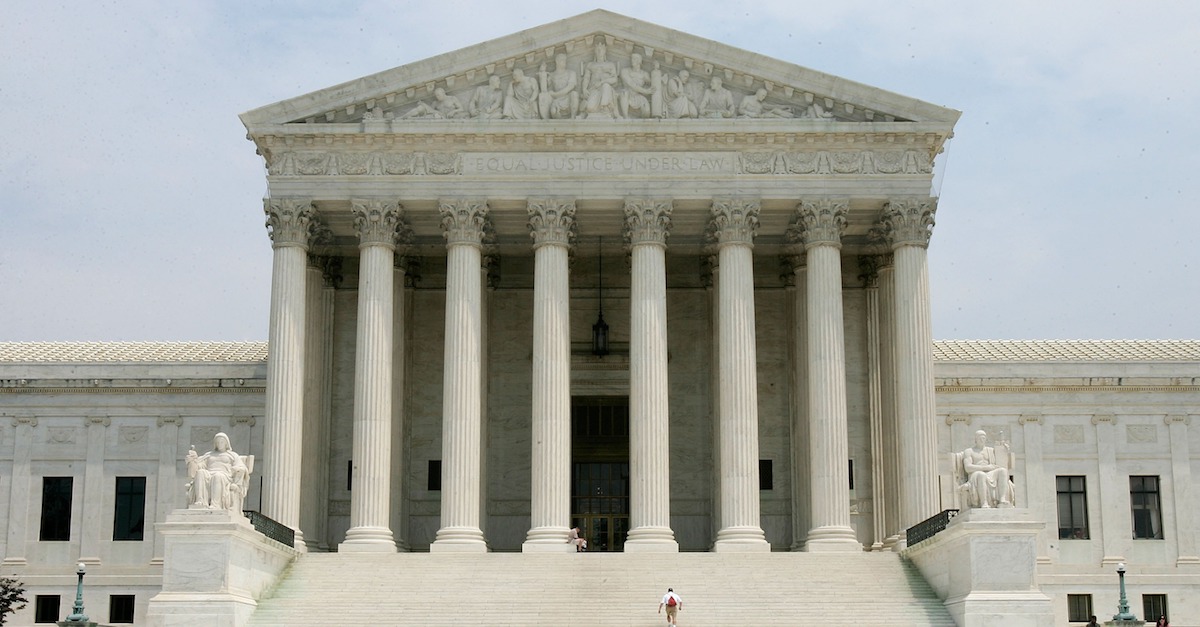
The Supreme Court on Monday ruled that only one of Texas’ current State House districts must be redrawn because it is the result of unconstitutional racial gerrymandering. Multiple other districts–previously determined to be the result of racial gerrymandering–are now allowed to stand. But that’s only the immediate impact of this decision.
The decision in the case, Abbott v. Perez, is being interpreted as a huge setback for anti-gerrymandering and voting rights advocates. Justice Sonia Sotomayor opened her dissent with a blistering attack on the majority. She wrote:
The Court today goes out of its way to permit the State of Texas to use maps that the three-judge District Court unanimously found were adopted for the purpose of preserving the racial discrimination that tainted its previous maps. In reaching its desired result, the majority commits…fundamental errors along the way.
This is a strong dissent and the majority opinion is equally caustic in describing the other side. But first, a bit of background.
In 2011, the Texas legislature redrew both their state and federal electoral maps. Various lawsuits were filed against those maps alleging multiple violations of the Voting Rights Act and U.S. Constitution. Technically, the 2011 maps never went into effect. A Texas District Court consolidated all those lawsuits into one case. The District court then redrew maps intended to be used solely for the 2012 election–which was quickly approaching. Much more legal wrangling ensued; the District court was told to redraw the maps a second time–bringing them closer to the original 2011 maps.
Texas technically did not return to the original 2011 maps, but in 2013 adopted the second set of slightly-altered maps created by the District court as the Lone Star State’s permanent maps. More litigation followed and the District Court once again, in August 2017, told Texas to redraw their maps. Texas directly appealed to the Supreme Court and this proved to be a contentious issue in and of itself due to jurisdiction. The liberal wing didn’t want the court to take the case; the conservatives did and won out.
Typically, jurisdictional discussions in Supreme Court decisions are boilerplate and don’t really invite much controversy. Monday’s ruling is an exception to this general rule. The 5-4 opinion authored by Justice Samuel Alito in large part relies on a novel interpretation of the Supreme Court’s jurisdictional authority. That is, the court’s basic authority to hear a case.
Most cases reach the Supreme Court because appeals have been exhausted or because the Supreme Court has mandatory authority and must take the case. Mandatory authority is codified at 28 U.S.C. §1253, which notes:
[A]ny party may appeal to the Supreme Court from an order granting or denying…an…injunction in any civil action, suit or proceeding required by any Act of Congress to be heard and determined by a district court of three judges.
Monday’s ruling, though accepted under §1253, is not based on an injunction of any sort.
Rather, the majority upends Supreme Court precedent by determining the District court’s August orders amounted to an injunction against Texas. Justice Sotomayor called out this reasoning as both overly complicated and ultimately flawed. She wrote, “Simple is thus the name of the game when it comes to jurisdictional rules. The rule in the majority opinion is anything but.”
To be sure, the Abbott decision is a departure from jurisdictional precedent. The practical effect of this departure is shrugged off by the majority as extremely limited but is harshly decried by the dissent. Sotomayor continues:
It is a worrisome prospect that, after today, whenever a three-judge district court expresses that a statutory or constitutional violation must be remedied, the party held liable will straightaway file an appeal in this Court and assert jurisdiction under §1253, even where the district court is clear that no injunction has issued.
That is certainly one possible outcome. The majority briefly attempted to dismiss this line of thought by asserting that the ruling “will affect only a small category of additional cases.” To support this argument, the majority opined on a set of allegedly limiting circumstances. Sotomayor harshly dismissed this argument as well:
The majority opinion purports to add a limit by distinguishing between unappealable orders that find a plan “unlawful long before the next scheduled election” or “very close to the election date,” and those (presumably) appeal-able orders that are entered neither “long before” nor “very close” to the next election.
According to Sotomayor, the practical import of these alleged limitations is likely to prove difficult to understand and therefore is essentially legally meaningless. Her dissent continues [emphasis added]:
What does that even mean? The orders at issue here were entered about 15 months before the 2018 elections, and according to the majority fall within the not “long before” but not “very close” appealable range. Why this is so, however, the majority never says.
To be sure, the Abbott ruling does leave Texas’ maps mostly intact. But at least two districts will have to be redrawn as a result because you can’t redraw one racially discriminatory district without affecting other districts. This process could very well result in more litigation, so don’t consider the battle of the maps completely over.
The most lasting impact of this decision, though, is likely to be the enlargement of the Supreme Court’s reach over direct-appeal cases it previously would have turned down.
[image via Alex Wong / Getty Images]